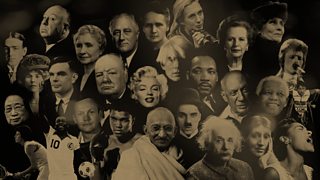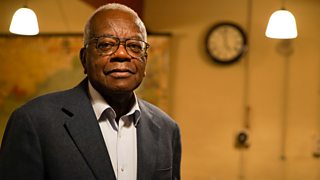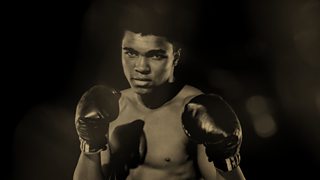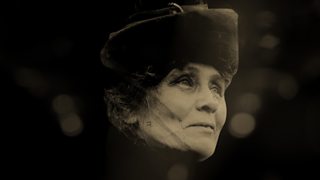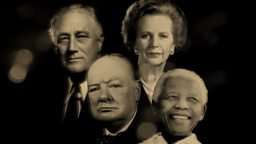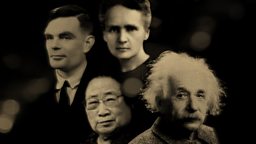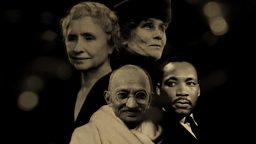Explorers
They pushed the boundaries of what was possible on… and off planet earth
In an age of smartphones and Sat Navs the idea that parts of the world could go uncharted seems mind-blowing. Yet, during the 20th century we were still on a mission to explore, map and learn all we could about our world. Charting expanses of jungle and ice; understanding the globe’s great nomadic cultures; blasting off into space – exploration in the last century didn’t just push at the hardest physical frontiers. It produced scientific, cultural and environmental revelations that changed humanity’s understanding of the planet it calls home.
Sharing a passion for discovery, a massive capacity for endurance and an awe-inspiring sense of curiosity, these four icons of exploration were much more than flag-planting swashbucklers – they helped us realise just why our planet is so precious.
-
![]()
Dermot O'Leary: Explorers' Advocate
"It’s the courage, determination and heroism of explorers who have brought us that greater understanding of earth itself."
Who do you think is the greatest?
Neil Armstrong
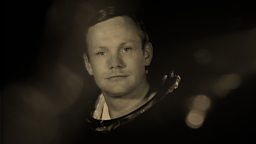
Lived: 1930-2012
Born: Wapakoneta, Ohio, US
Known for: First man on the moon
Neil Armstrong took a “giant leap for mankind” to become the first man to walk on the Moon.
Mystery creates wonder, and wonder is the basis of man’s desire to understand.
1. He could fly anything… whatever the tech spec
Having learnt to fly before he could legally get a pilot’s licence, the American flew for the US Navy in the Korean War and then became a test pilot. One of his early test models was the X-15: a rocket powered plane that was little more than a fuel tank with a cockpit.
2. He made it to the moon with less computing power than your smartphone
Armstrong clearly got the taste for being blasted around; on July 16, 1969, he was sat atop 777,000 litres of kerosene as his Apollo spacecraft got ready for lift off. And that was the easy part. Despite the fact the computer power available for the mission was the equivalent of a pocket calculator, four days later Armstrong was touching down on the moon’s surface in the ‘Eagle’ lunar module.
3. He left a mark for centuries… literally
The US astronaut’s footprints from the first ever moonwalk will remain on Earth’s nearest neighbour for thousands of years. His words too will echo through the generations: “This is one small step for man, one giant leap for mankind” is the possibly best status update ever.
Gertrude Bell
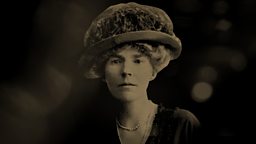
Lived: 1868-1926
Born: Washington, Tyne & Wear, UK
Known for: The first western woman to map and travel across Arabia
Gertrude Bell was the first woman to map Arabia, then navigated the male-dominated world of diplomacy, helping to create a new country: Iraq.
It’s so nice to be a spoke in the wheel, one that helps to turn, not one that hinders.
1. She was the first woman to gain a First in History at Oxford
Bell was a pioneer from the outset - her First in Modern History was the, er, first in that subject Oxford ever gave to a woman. Bell’s formidable achievements through her life were made when most women weren’t expected to be independent or intellectual.
2. She was the first western woman to cross Arabia
Bell was into archaeology, map-making, photography… with her awe-inspiring skills she was well placed to record and study as she travelled across Arabia, mapping it as she went. In 1909 she bumped into and advised another archaeologist TE Lawrence before he shot to fame as Lawrence of Arabia. Her work informed the world’s understanding of the Middle East and the various peoples who lived there.
3. She was integral in the creation of a brand-new country
After World War One Bell was the sole woman at the British top table wrangling over the future of the Middle East. She was instrumental in the creation of modern Iraq but with the region’s ensuing troubles, Bell’s involvement has been debated ever since. What isn’t questioned though is her love of the Arab people and their culture. She set up a museum to house some of Iraq’s cultural treasures – it is still there today; now known as the National Museum of Iraq.
Jane Goodall

Lived: 1934-present
Born: London, UK
Known for: Primatologist who revolutionised the study of wild chimpanzees
With pioneering methods, Jane Goodall’s research revealed how humans and chimps share ancestors
Every individual matters. Every individual has a role to play. Every individual makes a difference.
1. She discovered some long lost relatives
Goodall revolutionised the study of chimpanzees, pioneering new ways to study them. Through this she discovered that chimps used tools, created complex societies and could be so aggressive they could even kill one another. This suggested that chimps and humans are likely to have common ancestors. It was ground-breaking stuff.
2. She had to put up with some bad behaviour… not always from apes
The field of ape research, primatology, was a male-dominated profession before Goodall. She found many of her predecessors snobbishly objected to being told their theories were wrong by a Bournemouth-educated young woman, who’d made her own way to Africa with no formal qualifications. Who’s in the text books now though chaps?
3. She questioned what makes us human
While Goodall’s work made waves amongst her fellow researchers, the public enthusiastically responded to her revelations. The idea that chimps and humans were related spurred debates about what it means to be human, inspiring a rethink on animal rights. Her books were so widely read that when one of Jane’s subjects Flo died in 1972 The Sunday Times ran an obituary.
Ernest Shackleton
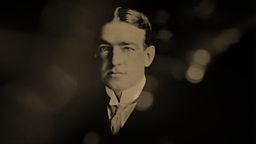
Lived: 1874-1922
Born: Kilkea, Ireland
Known for: Polar explorer and pioneer. Led the famous ‘Endurance’ expedition
Adventurer and man to get you out of jam, Ernest Shackleton escaped after being stranded in Antarctica
Difficulties are just things to overcome, after all.
1. He had ‘Endurance’ in more ways than one
Shackleton was probably tempting fate in 1914 when he set off in his boat, Endurance, on an expedition to cross Antarctica via the South Pole. Still, it was a quality he and his crew all shared. After the ship got trapped in the ice and eventually sank, they were all left stuck on a vast bit of ice for over two months.
2. He never lost hope
Shackleton and his crew escaped in lifeboats to the tiny Elephant Island… but it was uninhabited and inhospitable. Not one to be deterred, Shackleton went out in search of help – no mean feat when they were 800 miles from civilisation. First, he sailed with five of his men across near frozen seas in one of the tiny, open lifeboats. Then, having landed on the island of South Georgia, he had to lead a mountain climbing expedition, with no map, across the island before eventually reaching a base on the other side.
3. He got everyone home
Without the modern aids of radios, GPS or emergency helicopters Shackleton achieved the near impossible. Once he reached help, rescue parties were sent for his crew and, remarkably, every single member made it home. One of his contemporaries later commented, whatever qualities other polar explores, like Scott of the Antarctic or Roald Amundsen, had: "when disaster strikes and all hope is gone, get down on your knees and pray for Shackleton."
Four explorers. Four extraordinary achievements. But only one can be the most iconic explorer of the 20th century. The decision is yours.
Watch: Explorers of the 20th Century

Explorers of the 20th Century
These awe-inspiring explorers have changed how we see the world. Which one gets your vote?

